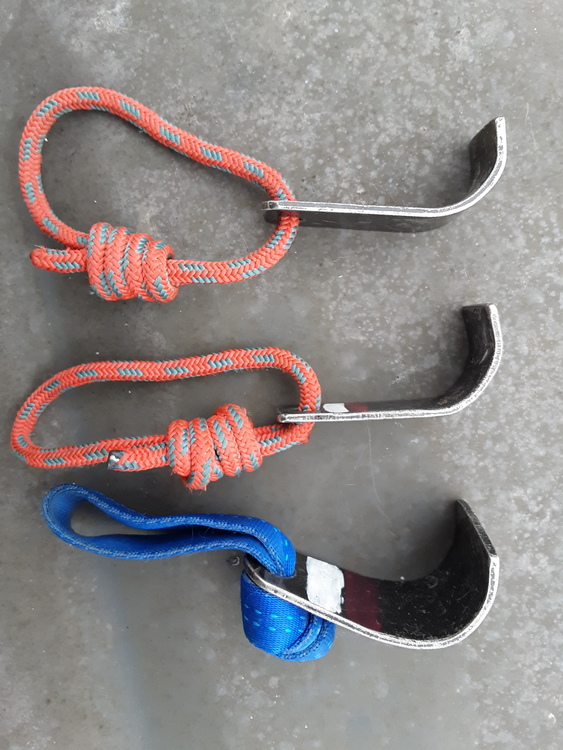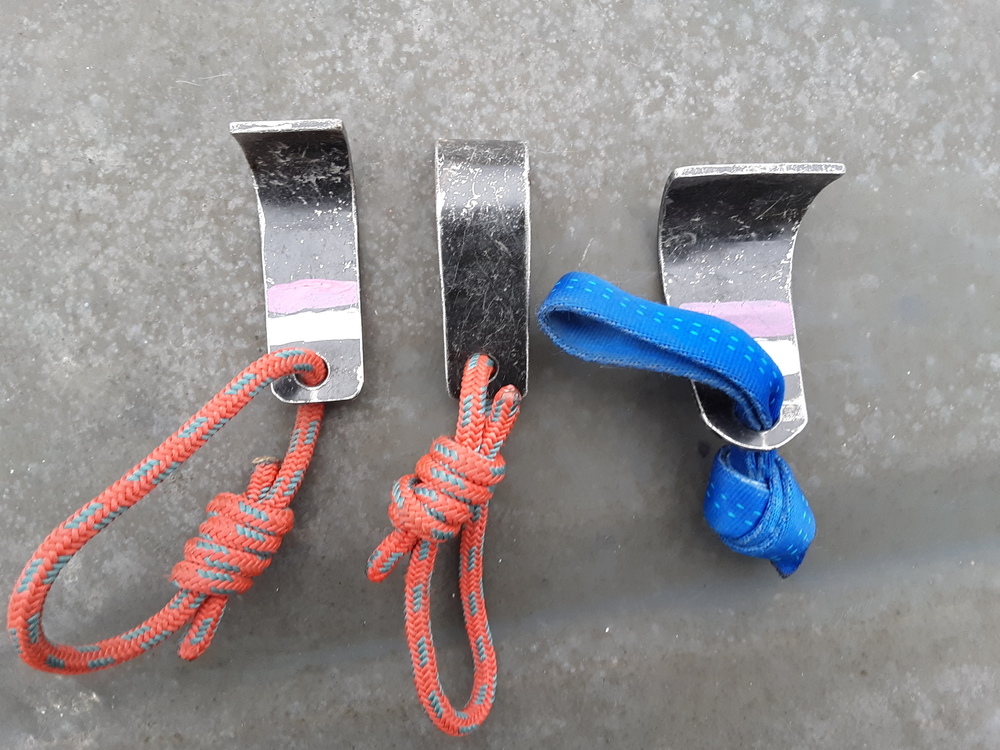Homemade cam hooks
|
|
Just out of curiosity is it possible to make your own cam hooks? |
|
|
Conceptually, a cam hook is a piece of 4140 flat stock that's bent over a radius and then heat treated. You could do this at home with basic hand tools and a torch. |
|
|
Piggybacking on this topic, does anyone have experience making your own beaks? I’m sure they’re stamped, and probably impractical to make/forge at home, but am just curious. |
|
|
sure, you can make your own, it's just a bent piece of metal. Given that you only need a handful of cam hooks, it is very unlikely that this is a cost-effective approach compared to buying them. |
|
|
If you decide to buy them- pretty good deal on them here: |
|
|
Manderson198 wrote: Piggybacking on this topic, does anyone have experience making your own beaks? I’m sure they’re stamped, and probably impractical to make/forge at home, but am just curious. To my barely trained eye, the Moses Tomahawks are water jet cut with the beak taper milled. Honestly, I'd love to hear about someone making their own with a hacksaw and a file. That'd be almost as awesome as Mr. Moses himself giving the poop on the manufacturing processes.Update: Well! https://mosesclimbing.us/home/tomahawks/ : "Heat-treated 4130 chrome-moly steel .. Laser-cut shape" |
|
|
I've made custom beaks with a slightly concave blades similar those old lucky curved knifeblads and SMC shallow angles. they were my expando slayers. |
|
|
Everett wrote: Right on! Good call on the laser cutting. That’s amazing he provides such detailed specs, and for all of the sizes.Have you used the left/right versions? Or climbed anything where they are critical? I only have experience with straight beaks. |
|
|
Kristoffer wrote: ... That’s cool about your previous experience. I would think the only time the direction of grain matters is with the taper, where you might be more concerned with durability of the tip. I would assume that going red hot, then quenching in oil is fine for heat treating. My smithing experience is minimal and mostly armchair though haha.I’d love to read the follow up if you get to making some more. Making something like a pika or some wider cam hooks seem fairly straight forward, at least more so than a beak. |
|
|
in my experience the left and right are nice in corners, but not exactly critical. I opt for straight ones because they are more versatile. Moses' beaks are so heavy that I would rather just have a jack off all trades version that I can use not matter the orientation.. buts thats just me. |
|
|
Right on re. the left/right. I would think they would be most beneficial if you are hammering/cleaning. At least with hand placing, in my experience, I get a bit of cam action from tight corner placements, if nothing else from the wire/webbing displacing the bottom. |
|
|
haha good catch Nolan. I guess its all so relevant, beaks are also known as peckers. |
|
|
Yeah, oil is going to be sufficient (and less violent) for chromoly steels. If you have confidence in the material you have and you're ever curious about heat treat, lots of manufacturers publish instructions. You have to adapt them to home use, but info like quenching medium and tempering time/temperature are really good to have. |
|
|
I made a set of my own cam hooks out of some scrap tool steel. I cold forged them over a 1" radius. Slung them with some 1/2" tubular and the honestly they work great. I probably should heat treat them but they've made it through a number of placements on a couple walls and I'm satisfied with the shape and size of them. I can post some pics if there's any interest. |
|
|
Canadian Alpine Tools is a small shop selling handmade pins/hammers/etc. |
|
|
TJH wrote: I made a set of my own cam hooks out of some scrap tool steel. I cold forged them over a 1" radius. Slung them with some 1/2" tubular and the honestly they work great. I probably should heat treat them but they've made it through a number of placements on a couple walls and I'm satisfied with the shape and size of them. I can post some pics if there's any interest. Would definitely like to see those pics, I’ve been thinking of trying this recently. |
|
|
Turns out I used cord for the narrow hooks but now I remember that I destroyed my drill bit and had to use a smaller one. Honestly they need to be tempered but they for sure work and have held during placements on a couple walls now. |

 Continue with onX Maps
Continue with onX Maps Continue with Facebook
Continue with Facebook





















